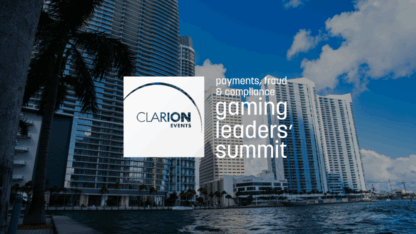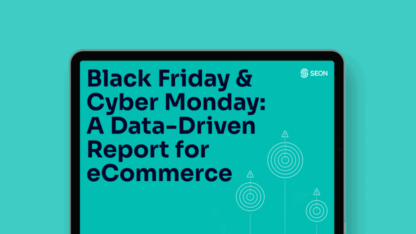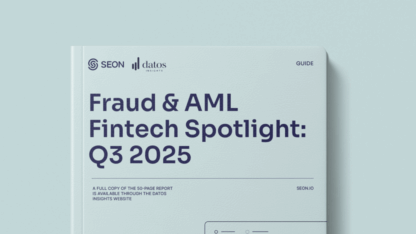What Is Financial Risk Management Software?
Financial risk management solutions safeguard an organization’s finances by identifying threats to cash flow and revenue while helping to mitigate them. These tools encompass various functions, such as transaction approvals, chargeback disputes, compliance, and customer onboarding.
They cater to businesses involved in real-money transactions and often address specific needs in finance and banking, like underwriting, credit scoring, payment approvals, and fraud prevention.
Key Features of Financial Risk Management Software
There is really only one way to fight transaction fraud: by acquiring more knowledge about your customers. But what you can do with it varies based on the kind of features you have access to. The most important include:
- Custom rules: As risk is an ever-evolving threat, you want to be able to quickly update or edit your risk rules without the need to go through developers.
- Risk scoring: Static rules and flags have their place, but more sophisticated risk managers want to be able to set thresholds for what is considered low, medium or high-risk.
- AML tools: The ability to manage both fincrime and meet compliance requirements from the same dashboard is a great advantage.
- Machine learning suggestion: If you are struggling to identify risk patterns in your large volumes of data, an AI or machine learning system can help.
Partner with SEON to minimize risk and reduce fraud rates in your business with ML, real-time data enrichment, and advanced APIs.
Ask an Expert
The 10 Best Financial Risk Management Software
SEON
Our Unique Take on Risk Management Software
SEON is an end-to-end fraud platform that efficiently addresses pain points and works transparently to protect transactions and revenue. There are also tools that provide invaluable insight for manual reviews, helpful presets, and flexible ways to integrate. Among these is the data enrichment module, which scours open-source intelligence (OSINT) sources to create each customer’s digital footprint, complete with 90+ social and web platform signals – to help both manual and automatic decision-making.
Pros
- Flexibility
- End-to-end solution
- Unique digital footprinting
Cons
- No on-site integration
- No on-premise support
ArkOwl
Lightweight Email & Phone Analysis
ArkOwl provides live, accurate, and rich analysis mainly for email and phone verification. This helps predict how risky a user will be before they process a payment on your site. Its analysis looks at the domain, breaches, and social networks, among other things.
Pros
- Lightweight
- Real-time
Cons
- Limited documentation
- Not many sources
Emailage
Mature, Reliable End-to-End Platform
Now acquired by the tech corporation LexisNexis, Emailage delivers risk intelligence via email address analysis and predictive scores. The company has been operating for a long time, putting it in the category of mature, enterprise risk management software, but it nevertheless innovates with tools such as the Chrome extension.
Pros
- Lightweight
- Integrates with LexisNexis
Cons
- Missing fraud prevention
- Pricey
Ekata
Ease of Use and Modular APIs
Ekata leverages identity verification to validate customers and prevent risk. For analysis, it uses a tool called the Ekata Identity Graph. This acquires global data from other providers to see which users have been vetted based on phone, address, and email validation.
Pros
- Ease of use
- Modular
Cons
- Lacks some functionality
TruValidate (formerly Iovation)
The iGaming Go-to
TransUnion TruValidate (once called Iovation) was an iGaming risk management software leader. However, in recent years, it has grown into a full suite of risk management solutions, including some suited for financial risk.
Pros
- Device fingerprinting
- Focus on insurance companies
Cons
- False positives
- No real-time digital footprint
Cybersource
Database-Powered Payments Powerhouse
Owned by Visa, Cybersource is a popular financial risk management software vendor. It was founded back in 1994 and has since amassed experience that led it to boast $691 billion in transactions in 2021.
Pros
- Payments focus
- Set and forget
Cons
- Data is not live
ThreatMetrix
Recognize Returning Customers
Following its 2018 acquisition, ThreatMetrix continues to deliver innovative risk management and cybersecurity services with a focus on authenticating personas and transactions – now as part of the expansive family of LexisNexis Risk Solutions.
Pros
- Whitebox
- Reduce churn
Cons
- Tricky to integrate into a stack
- No customer intel
SAS
The Fortune 500’s Favorite
SAS is one of the largest financial risk solutions on this list. It’s also the oldest. Founded in 1984, SAS, or Statistical Analysis System, has been adopted as the risk management solution of choice for a number of Fortune 500 companies in banking, insurance, and the pubilic sector.
Pros
- On-premise deployment
- Highly granular modules
Cons
- Heavy integration
- Dated UX
Feedzai
Fighting Financial Crime
One fast-growing leader in financial risk management is Feedzai, a Silicon Valley company that reached unicorn status in 2022 and now employs 600 people in 11 offices around the world.
Pros
- Unified compliance
- Trusted by North American Fortune 500s
Cons
- Opaque pricing
- Limited data enrichment
Actico
Risk Management and Business Intelligence
What do traditional finance companies such as Santander, Volkswagen Financial Services, and ING have in common? They’re all protected by Actico, a KYC and AML solution known for offering full compliance and risk management.
Pros
- Risk management and compliance
- Part of a larger ecosystem
Cons
- Enterprise pricing
- No real-time data enrichment
Partner with SEON to reduce fraud rates in your business with real-time data enrichment, whitebox machine learning, and advanced APIs.
Ask an Expert
Comparison Table of Financial Risk Management Tools
| SEON | ArkOwl | Emailage | Ekata | TruValidate | Cybersource | ThreatMetrix | |
| Pricing model | Pay per API call | Pay per API call | Pay per check | Pay per API call | Pay per API call | Tier-based | Pay per check |
| Transparent pricing | Yes | x | x | x | x | x | Yes |
| Free integration | Yes | x | x | Yes | x | x | x |
| Free trial | Yes | Yes | x | Yes | x | x | x |
| No integration batch trial | Yes | Yes | x | Yes | x | x | x |
| ISO 27001 certified | Yes | x | x | x | x | Yes | x |
| Social and web lookup | 90+ | 7+ | 0 | 0 | 0 | 0 | 0 |
How to Choose the Best Financial Risk Management Software
The risk identification and fraud risk management landscape is fast evolving. Legacy giants continue to grow and acquire each other. Meanwhile, younger startups develop innovative solutions and target specific niche markets. Choosing the best solution depends on your business needs and priorities.
At SEON, we are dedicated to creating the ultimate fraud monitoring tools. Not just to reduce chargebacks but also to combat bonus abuse and multi accounting, and help with KYC processes and AML regulations.
Our goal was always to develop risk management software that was flexible, powerful, and transparent enough to fit any industry and meet any challenges for risk managers head-on. We certainly find our clients are more than satisfied with what we’ve built so far, and we hope you’ll give our products a try too.
Integration Type
Financial risk management software will be deployed in-house or online depending on your regulatory requirements. The former is more expensive but gives you more control over data security. The latter is more flexible, as they are essentially sold under the SaaS model. You connect your own business data via API. They include:
- Data enrichment: These solutions let you aggregate more info based on a single point, such as an email address or phone number. They are ideal for manual reviews or for managers who just need extra insights. Some calculate a risk score; others deliver in raw form.
- End-to-end platforms: These provide extra data and rules to calculate a risk score more efficiently. This gives you much more control and flexibility over mitigating risk. The most sophisticated platforms use machine learning (ML) to help you discover new risk rules automatically.
Note that most financial institutions layer multiple solutions, for instance one dedicated to AML, another to KYC, and one to anti-fraud.
Pricing Models & Hidden Costs
While all fraud companies operate under the software as a service (SaaS) model, you can also roughly group them based on how they charge:
- Chargeback guarantee: The provider will charge a percentage of the amount it processes and offer to cover the fees in case a chargeback request slips through the net.
- API or check-based: You pay a micro fee every time the software checks an action.
Chargeback guarantee models seem great because your business won’t have to deal with disputes any longer, but the vendor has a strong incentive to block more payments. This often results in more false positives, which could actually damage your bottom line in the long run. On the other hand, for API or check-based calls, you only pay for what you use.
You also need to consider how long it takes to integrate and deploy, the learning curve (which could result in several false positives and negatives at first), and whether there is unlimited – and free – customer support.
FAQs
The biggest risks to cash flows that risk management software can help with include chargebacks, compliance issues and fines, and various fraud schemes, including friendly fraud and triangulation fraud.
Not always. There are different payment models in risk management. You’ll find everything from subscription models to pay-per-query above. Some vendors, such as SEON, also offer more than one payment model for you to choose from.








